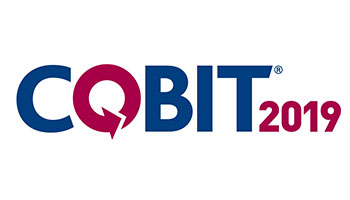
Introduction
COBIT, which stands for Control Objectives for Information and Related Technologies, is a framework created by ISACA (Information Systems Audit and Control Association) for IT management and governance. It was first introduced in 1996 and has since evolved to address the changing landscape of IT governance and management. COBIT is designed to help organizations develop, implement, monitor, and improve IT governance and management practices. It provides a comprehensive framework that assists enterprises in achieving their goals by managing IT-related risks and ensuring that IT resources are used effectively and efficiently.
The Evolution of COBIT
The COBIT Certification framework has undergone several significant revisions since its inception:
- COBIT 1.0 (1996): The original version focused on control objectives for IT processes and was primarily used by auditors.
- COBIT 2.0 (1998): This version expanded the control objectives and introduced management guidelines.
- COBIT 3.0 (2000): Further enhancements were made to include more detailed management guidelines and maturity models.
- COBIT 4.0 and 4.1 (2005, 2007): These versions integrated more comprehensive management and governance components, aligning with international standards.
- COBIT 5 (2012): A significant overhaul, COBIT 5 integrated more business-oriented principles and practices, aligning IT goals with business goals.
- COBIT 2019: The latest version, released in 2018, introduced a more flexible and agile framework to cater to modern IT governance needs, with a focus on customization and continuous improvement.
Core Components of COBIT
COBIT is structured around five key principles and seven components that ensure the effective governance and management of enterprise IT.
Five Key Principles
- Meeting Stakeholder Needs: COBIT ensures that enterprise IT delivers value to stakeholders by balancing benefits realization, risk optimization, and resource utilization.
- Covering the Enterprise End-to-End: It integrates governance of enterprise IT into the overall enterprise governance framework, covering all functions and processes within the organization.
- Applying a Single Integrated Framework: COBIT aligns with other relevant standards and frameworks, providing a unified and comprehensive approach to IT governance.
- Enabling a Holistic Approach: It considers various enablers, including processes, organizational structures, culture, ethics, and behavior, to achieve comprehensive governance and management.
- Separating Governance from Management: COBIT distinguishes between governance (ensuring stakeholder needs, conditions, and options are evaluated to determine balanced, agreed-on enterprise objectives) and management (planning, building, running, and monitoring activities aligned with the governance direction).
Seven Components (Enablers)
- Principles, Policies, and Frameworks: Guidelines to establish the governance and management framework.
- Processes: Structured activities to achieve specific objectives.
- Organizational Structures: Roles and responsibilities within the enterprise.
- Culture, Ethics, and Behavior: The enterprise’s culture and ethical behavior influencing governance and management.
- Information: Data used to support business processes.
- Services, Infrastructure, and Applications: The IT resources needed for delivering IT-related services.
- People, Skills, and Competencies: The human resources required to execute the framework effectively.
COBIT Governance and Management Objectives
COBIT provides a set of governance and management objectives that serve as a reference model for organizations. These objectives are organized into domains:
Governance Objectives
- Evaluate, Direct, and Monitor (EDM): Ensuring that stakeholder needs, conditions, and options are evaluated to determine balanced, agreed-on enterprise objectives; direction is set through prioritization and decision making; and performance and compliance are monitored against agreed-on direction and objectives.
Management Objectives
- Align, Plan, and Organize (APO): Covers strategies and tactics, and concerns the identification of the way IT can best contribute to the achievement of business objectives.
- Build, Acquire, and Implement (BAI): Concerned with the realization of IT strategy and the identification, development, and/or acquisition of IT solutions.
- Deliver, Service, and Support (DSS): Concerned with the operational delivery of services.
- Monitor, Evaluate, and Assess (MEA): Concerns performance monitoring, assessing, and ensuring compliance.
Benefits of Implementing COBIT
Implementing COBIT offers several benefits to organizations:
- Enhanced Governance: COBIT provides a structured approach to IT governance, ensuring that IT activities are aligned with business goals.
- Risk Management: It helps organizations identify, assess, and mitigate IT-related risks effectively.
- Improved Decision-Making: By providing comprehensive information and metrics, COBIT aids in making informed decisions.
- Increased Efficiency: COBIT’s framework ensures that IT resources are used efficiently, optimizing costs and improving productivity.
- Compliance and Assurance: COBIT aligns with various regulations and standards, helping organizations meet compliance requirements.
- Enhanced Stakeholder Value: By aligning IT with business objectives, COBIT ensures that IT delivers value to stakeholders.
COBIT Implementation
Implementing COBIT involves several steps:
- Understanding the Business Context: Assess the organization’s goals, objectives, and risk appetite.
- Tailoring COBIT to Fit: Customize the COBIT framework to align with the specific needs and context of the organization.
- Designing a Governance System: Develop a governance system that includes principles, policies, processes, and roles.
- Implementation Planning: Create a detailed plan for implementing the governance system, including timelines, resources, and milestones.
- Executing the Plan: Implement the governance system, ensuring that all stakeholders are involved and informed.
- Monitoring and Evaluation: Continuously monitor and evaluate the effectiveness of the governance system, making adjustments as necessary.
Challenges and Considerations
While COBIT provides a comprehensive framework, organizations may face challenges in its implementation:
- Resistance to Change: Employees and management may resist changes in processes and practices.
- Resource Allocation: Implementing COBIT requires adequate resources, including time, money, and personnel.
- Complexity: The comprehensive nature of COBIT can be overwhelming for some organizations, especially smaller ones.
- Continuous Improvement: Maintaining and improving the governance system requires ongoing effort and commitment.
Conclusion
COBIT is a powerful framework for IT governance and management that helps organizations align their IT activities with business goals, manage risks, and ensure efficient use of resources. By understanding its principles, components, and implementation steps, organizations can effectively leverage COBIT to enhance their IT governance and achieve their strategic objectives. Despite the challenges, the benefits of implementing COBIT make it a valuable tool for organizations aiming to optimize their IT operations and deliver value to stakeholders.







